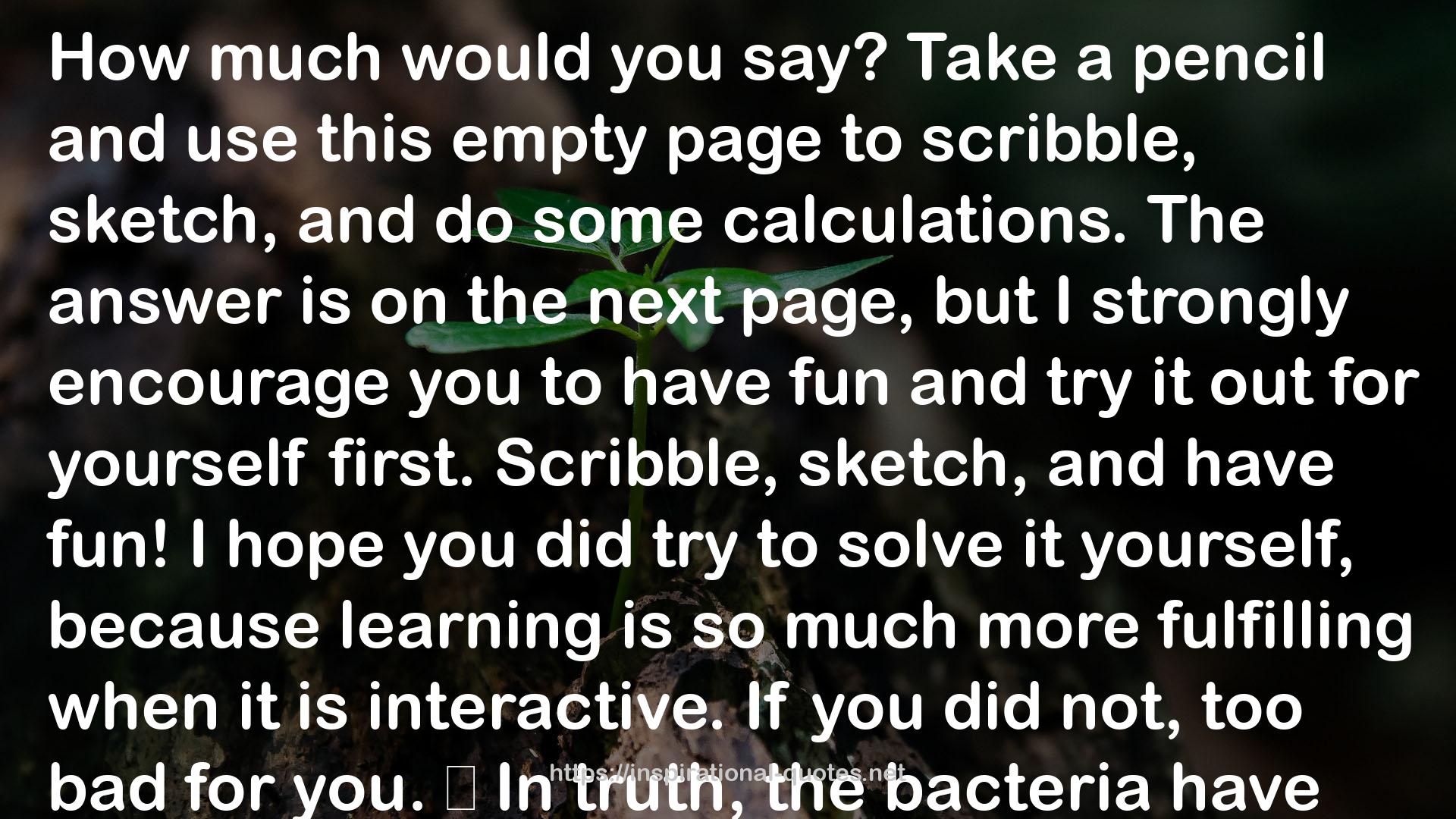" How much would you say? Take a pencil and use this empty page to scribble, sketch, and do some calculations. The answer is on the next page, but I strongly encourage you to have fun and try it out for yourself first. Scribble, sketch, and have fun! I hope you did try to solve it yourself, because learning is so much more fulfilling when it is interactive. If you did not, too bad for you. ☹ In truth, the bacteria have only filled 3.125% of the glass. But how can this be? Well it is simple. If they double every minute, and they fill the entire glass in 60 minutes, then they will have filled half the glass the minute before 60 (or 50% after 59 minutes), half of that the minute before 59 (or 25% after 58 minutes), and so on. Table 3.1 summary of the last 10 minutes, starting from the end. Time Elapsed Amount Filled 60 minutes 100 .000% 59 minutes 50 .000% 58 minutes 25 .000% 57 minutes 12. 500% 56 minutes 6. 250% 55 minutes 3. 125% 54 minutes 1. 563% 53 minutes 0. 781% 52 minutes 0. 391% 51 minutes 0. 195% Table 3.1: Exponential growth of bacteria in a bottle over the last 10 minutes. It all makes sense now, right? Suddenly it becomes clear, even obvious. Who could not get this? It is so simple, right? Apparently, it is not. The most common replies I get are between 50% and 90%. Even college graduates typically get it wrong. And let?s not talk about politicians. We will come back to this in the Appendix, with some real-world examples. For now, I think it is safe to say that we all understand what steady growth means. Let’s now see how this applies to our main focus in the next chapter: information technology. "
― Federico Pistono , Robots Will Steal Your Job, But That's OK: How to Survive the Economic Collapse and Be Happy
